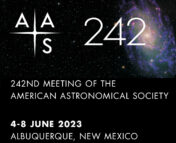Welcome to the summer American Astronomical Society (AAS) meeting in Albuquerque, NM, and online! Astrobites is attending the conference as usual, and we will report highlights from each day here. If you’d like to see more timely updates during the day, we encourage you to search the #AAS242 hashtag on Twitter. We’ll be posting once a day during the meeting, so be sure to visit the site often to catch all the news!
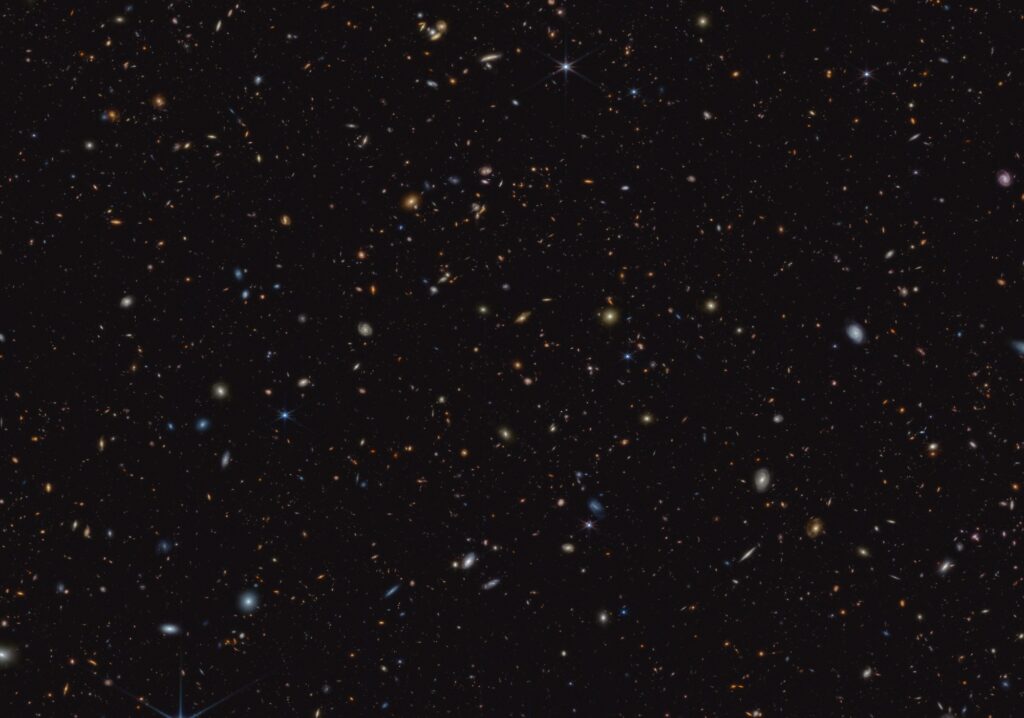
Table of Contents:
- Fred Kavli Plenary Lecture: Dan Scolnic (Duke University)
- Press Conference: Discoveries in Distant Galaxies
- Oral Session: Daytime & Dark Sky Heritage in American Southwestern Archaeoastronomy
- Plenary Lecture: Edwin “Ted” Bergin (University of Michigan, Ann Arbor)
- Press Conference: Solar Swirls, Satellites, and Saving the Night Sky
- Plenary Lecture: Greg Taylor (University of New Mexico)
- Plenary Lecture: Jeyhan Kartaltepe (Rochester Institute of Technology)
Fred Kavli Plenary Lecture: Dan Scolnic (Duke University) (by Lucas Brown)
AAS started off tense this year — that is, it started with a presentation about two measurements that are in tension with each other. Professor Dan Scolnic of Duke University took the stage to give this meeting’s Fred Kavli Plenary Lecture, which focused on his work measuring the expansion of the universe with Type Ia supernovae. Over the past ten years, these sorts of “direct” measurements of the expansion rate (denoted “H0”) have honed in on a value around 73 km/s/Mpc while precise measurements of the cosmic microwave background (CMB) combined with the standard model of cosmology have suggested a value around 67.5 km/s/Mpc. What gives?
The first portion of Prof. Scolnic’s talk helped bring us up to speed on the history of the Hubble constant and the idea of the expanding universe itself. More than 100 years ago, Einstein completed his general theory of relativity, and he set out to apply his new theory to the universe as a whole to understand its cosmological implications. Quickly, he found that in order to have a static, eternal universe, a constant term had to be added to his field equations — the “cosmological constant.” Einstein insisted for much of his life that any non-static models of the universe derived from his theory had to be wrong in some way, Prof. Scolnic noted, but the idea of a dynamic universe was eventually vindicated through observations. Those observations, carried out initially by Harvard astronomer Henrietta Leavitt and then expanded upon by Edwin Hubble, involved measuring the distances to far away galaxies using Cepheid variable stars, whose intrinsic brightness can be deduced from their period of brightening and dimming. By tracking the relation between the distance to a galaxy and the velocity at which it recedes from us, Hubble and his successors demonstrated the expansion of the universe.
Type Ia supernovae, like Cepheid variables, have an intrinsic brightness that can be tightly constrained. This, combined with their extreme luminosities, makes them ideal for measuring the expansion of the universe on even larger distance scales. Precise measurements of this expansion using supernovae revealed that the universe is not only expanding but accelerating, which encouraged the re-introduction of Einstein’s cosmological constant into cosmology. Today, measuring the expansion rate of the universe H0, as well as the value of the acceleration, are major aspects of observational cosmology. Prof. Scolnic works in large collaborations like Pantheon+ and SH0ES to measure these values using Type Ia supernovae and other objects with well-constrained intrinsic brightness, known as “standard candles.” The process of combining distance measurements from different types of standard candles to estimate farther and farther distance scales is known as the “distance ladder” method. In contrast, one can also infer H0 from measurements of the CMB. Prof. Scolnic likened this approach to looking at a human growth chart: the CMB acts as a “baby picture” of our universe, and when we combine this picture with a cosmological model we can generate an expected growth-chart to predict the properties of the universe today. However, in recent years it has become clear that CMB measurements are predicting a lower value of H0 today than is actually measured using the distance ladder technique.

This discrepancy, known as the “Hubble tension,” has led to large amount of criticism being levied at the work of Prof. Scolnic and his collaborators, as some believe the tension is most easily explained as being the result of systematic errors in their analysis. However, Prof. Scolnic and his teams have worked diligently over the past several years to address these concerns. In his presentation, Prof. Scolnic demonstrated how even tweaking over a dozen aspects of their analysis couldn’t get H0 below about 72.5 km/s/Mpc, still far from the 67.5 km/s/Mpc derived from CMB measurements. Removing entire “rungs” on the cosmic distance ladder also fails to resolve the tension. Prof. Scolnic believes that their measurements are indeed correct, and that part of why other physicists are so apprehensive about the analysis is that there isn’t anything immediately obvious on the theoretical side that can fix the tension. In many theoretical explanations, a radical change in the dynamics of the universe must occur at either very early or very recent times. Prof. Scolnic largely dismisses the latter conclusion, highlighting a paper that speculates on the possibility that a rapid change in the gravitational force ~100 million years ago may have occurred, coinciding with the extinction of the dinosaurs. The bizarre connection here is meant to demonstrate how sparse the evidence is for these recent-universe changes. On the other hand, Prof. Scolnic thinks some theories which modify early-universe dynamics may be promising, such as “early dark energy.” Regardless of what exactly turns out to resolve the Hubble tension, there is clearly a lot left to learn about the history of our universe.
Press Conference: Discoveries in Distant Galaxies
The press office at AAS 242 decided to begin their press conference schedule from a long, long time ago and in galaxies far away, with subsequent press conferences bringing us gradually closer to home by Wednesday. This first one, though, was all about discoveries in distant galaxies using new-age probes that extend humanity’s sense-making capabilities almost beyond comprehension — through gravitational wave detectors such as LIGO and Virgo and telescopes like JWST.
First up, representing the “audible” sector of astronomy — listening to the “sounds” of spacetime via gravitational waves — was Ore Gottlieb from Northwestern University’s Center for Interdisciplinary Exploration and Research in Astrophysics. While detectors such as LIGO and Virgo now regularly catch the chirps from merging binary neutron stars and black holes, there are other, yet undiscovered sources of gravitational waves that researchers hope to uncover in their fourth observing run (O4). One of these is catching the combined cacophony of gravitational wave sources, also known as the “stochastic gravitational wave background,” as opposed to hearing individual events. While compact binaries also contribute to this background, Gottlieb focussed on two additional possibilities that can set spacetime in motion: Supernovae and the progenitors of gamma ray bursts (GRBs). The latter can create extended “cocoon” structures powered by jets in 20-40-solar-mass stars, and these promise to be the most likely stochastic background candidate. However, Gottlieb noted that there is only about 1% chance of detecting cocoon signatures in O4, and realistically, we will need third-generation observatories.
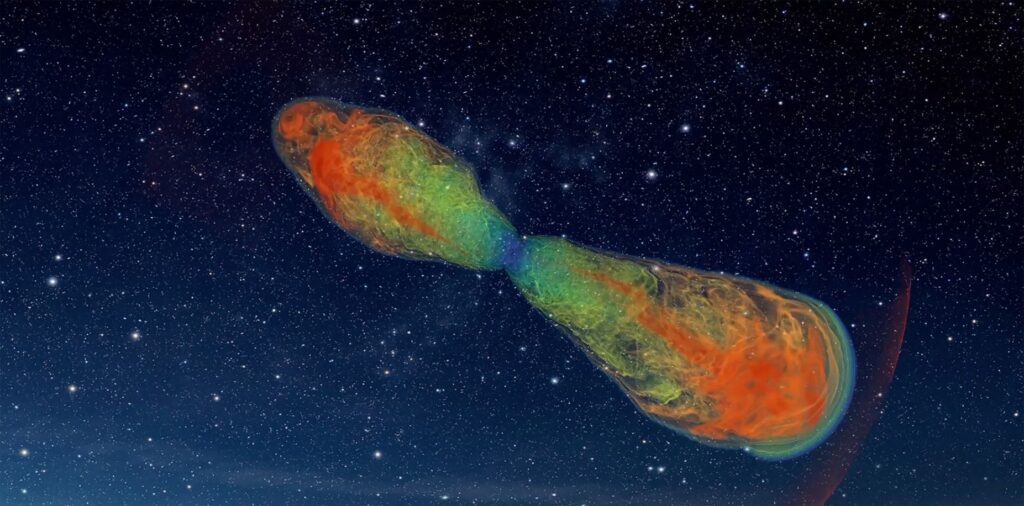
Next up was a trio of presenters unveiling new results from the JWST-JADES project. JADES, short for the JWST Advanced Deep Extragalactic Survey, is a massive hunt for galaxies especially from the early universe (when it was only around 600 million years old). In late 2022, the team broke the record for the earliest discovered galaxy, and they expect to keep breaking milestones as new data rolls in.
The first speaker, Marcia Rieke from Arizona State University introduced the JADES project and its latest data release. This was followed by Kevin Hainline from the Steward Observatory who gave an outline of exactly how early of an universe their team is probing. JADES’ dataset of galaxies from less than 600 million years since the Big Bang now numbers at 717, up from only a dozen or so before JWST! “It’s exciting that we can even talk about these (early) times,” Hainline said. More than 93% of these galaxies, which formed the early hydrogen and helium crucial for the evolution of our universe, were never seen before JWST. But now, not only can we detect these infant galaxies, but we can also see complex structures in them, including one dumbbell-shaped early galaxy which is Hainline’s favorite.
Ryan Endsley from UT Austin gave the next JWST update about dwarf galaxies. He said that ultraviolet emission lines from the recombination of hydrogen ions are valuable probes of star formation in early galaxies. In particular, they are great probes to study dwarf galaxies, given JWST’s ability to detect emission lines from galaxies that are 50 times fainter than what was possible before. It is now also possible to compare whether bright and faint galaxies from the early universe developed differently. And indeed, the JADES team found that the brightest galaxies underwent more star-formation bursts — events wherein matter equivalent to several tens of Suns formed at once.
The next presentation emitted smoke, not quite from fireworks, but from a new discovery that definitely warrants setting some off — that of complex organic molecules in early galaxies. Jane Rigby presented these results from the TEMPLATES project, which uses JWST observations of four distinct galaxies. She made sure to spotlight two researchers to be credited with this discovery: Justin Spilker from Texas A&M University and Kedar Phadke from the University of Illinois. Through observing a galaxy 12 billion light-years away that got bent, warped and magnified by a closer clump of galaxies 3 billion light-years away in what is known as gravitational lensing, the team could make out signatures of organic molecules that lead to smoke or smog-like structures in their images.
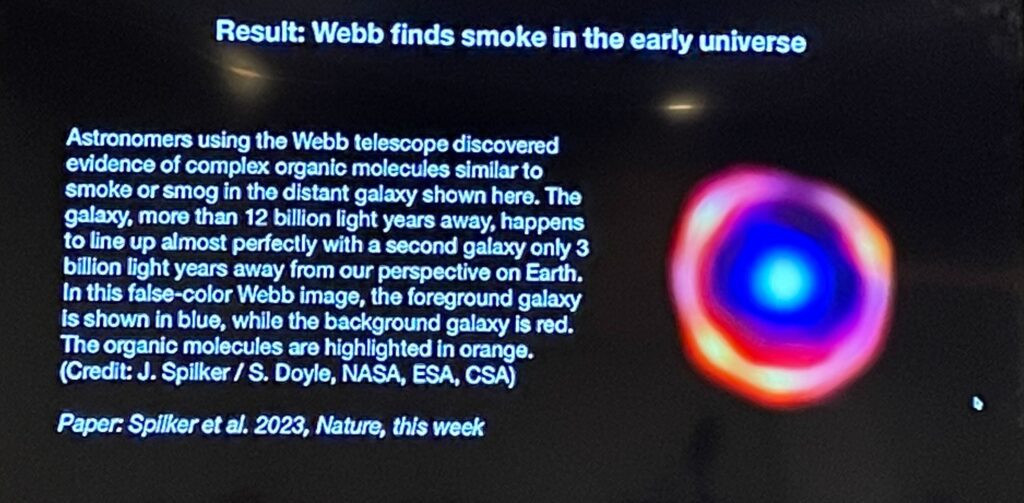
The final press briefing of this morning was given by Patrick Kamieneski from Arizona State University, who talked about a dusty and warped Milky Way-like galaxy nicknamed “El Anzuelo.” Spanish for a fish-hook, this term aptly describes the shape of this galaxy which is 11 billion light-years away. While similar in size and a dustier version of our own galaxy, El Anzuelo forms stars at more than 80 times faster than the Milky Way. JWST’s incredible infrared detection capabilities have made it possible to dramatically improve the way in which we can study such objects.
Oral Session: Daytime & Dark Sky Heritage in American Southwestern Archaeoastronomy (by Emma Clarke)
Tony Hull from the University of New Mexico started this session by discussing a simple and accurate method to define cardinal directions. In an experiment in Chaco Canyon, New Mexico, researchers used a portable light stand constituting a gnomon and pebbles to track the trajectory of the gnomon shadow. They showed that on the equinox, the tip of the shadow follows a straight line, oriented accurately east–west. They concluded that the equinox gnomon is sufficient to establish the cardinality of the Great House Pueblo Bonito in Chaco Canyon. However, this is not ethnographic evidence that the method was used, rather that it could have been used.
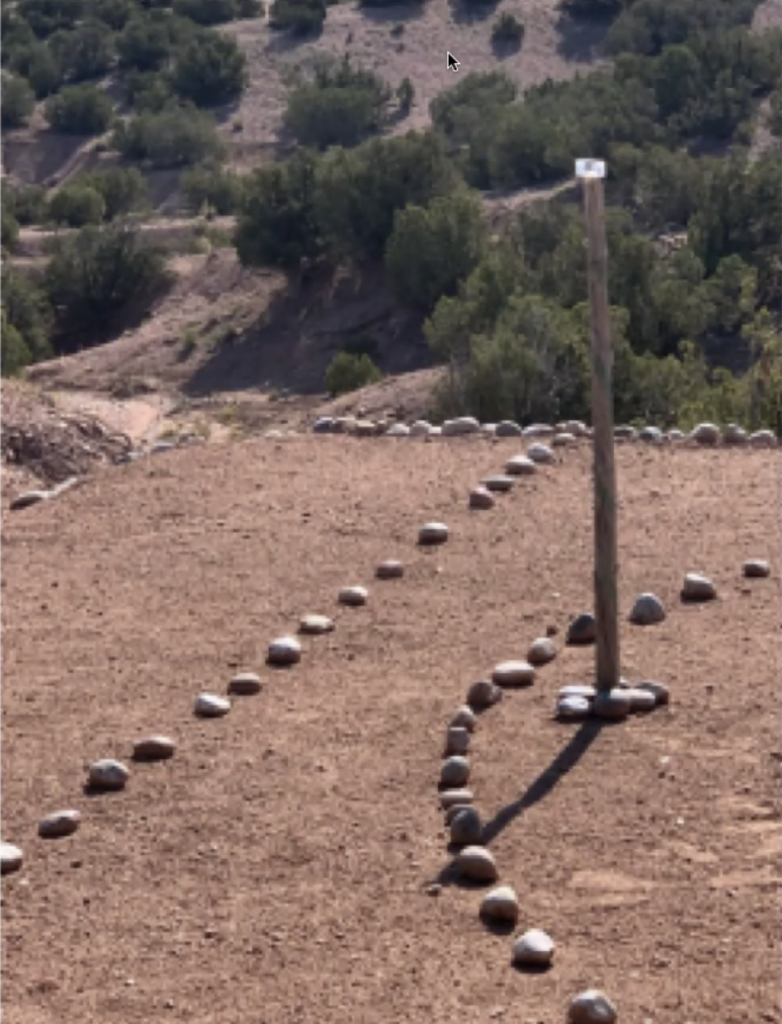
Next up, Cherilynn Morrow discussed the outreach program associated with NASA’s PUNCH mission: four “suitcase-sized” spacecraft focused on the inner heliosphere between the Sun and Earth that is scheduled to launch in 2025. The PUNCH outreach program focuses on the sun as a natural extension of the human understanding of the sun and its rhythms. The program shares the interconnections between historical sun watching, such as interpreting the “eclipse” petroglyph site at Chaco Canyon, and modern sun watching, both by NASA missions and all contemporary people observing sunrise, sunset, light and shadow cast by the sun, and eclipses.
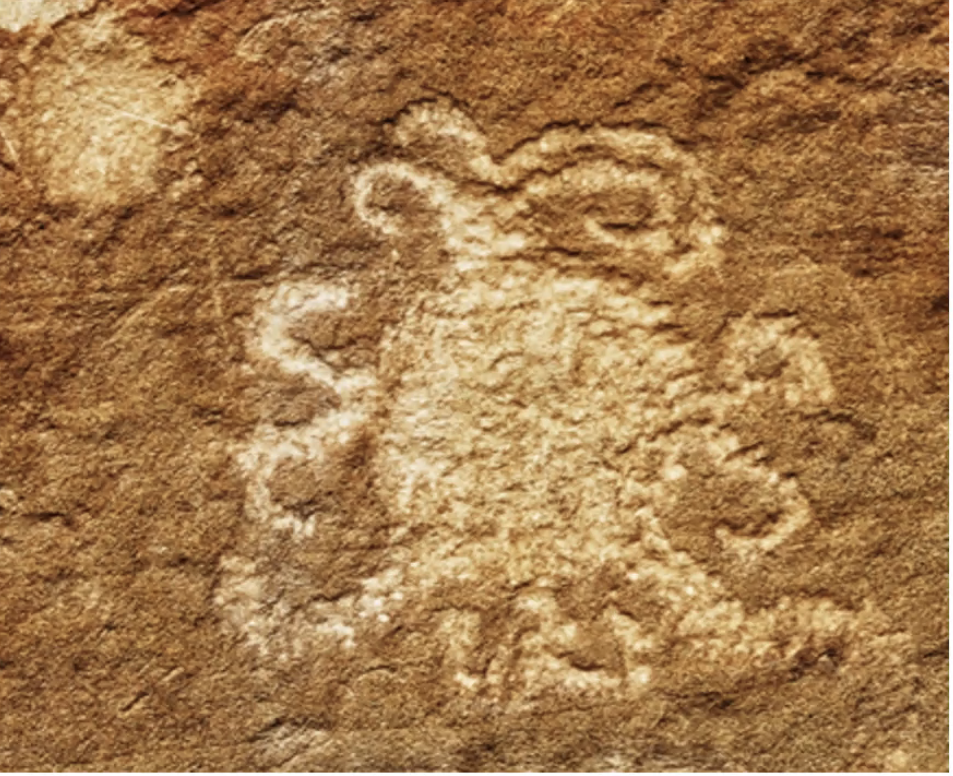
The third speaker, J. McKim Malville, discussed the astronomy connected with the Great Houses in Chaco Canyon and what it meant for the inhabitants, residents, and visitors during astronomical events. One unanswered question is why the 15 Great Houses were built in such a resource-poor location, and not totally abandoned when leaders moved northward. Perhaps the canyon and buildings were sacred places with astronomical significance.
Closing the session, Michael Rymer spoke briefly about archaeoastronomy and international dark sky places. The International Dark-Sky Association’s International Dark Sky Places Program encourages areas around the world to preserve dark sites through policies and public education. Two dark sky places in the US — Chaco Culture and National Historic Park in New Mexico, and Hovenweep, on the border of Utah and Colorado — are also archaeoastronomical sites. Protection of the dark night sky at these places not only makes better stargazing, but is also important for preservation of wildlife and plants. There is a growing list of potential future sites of dark-sky parks in the US.
Plenary Lecture: Edwin “Ted” Bergin (University of Michigan, Ann Arbor) (by Junellie Gonzalez Quiles)
Murthy Gudipati from the Jet Propulsion Laboratory (JPL) introduced the Laboratory Astrophysics Division and invited everyone to become familiar with the division and join as members. He then introduced the plenary speaker, Prof. Edwin “Ted” Burgin from the University of Michigan, Ann Arbor. His talk titled “The Birth of Planets and the Story of Carbon” started with his recognition of laboratory astrophysicists and their role in helping understand the fundamentals needed to study astrophysical phenomena. Ted then transitioned to mentioning how the search for life has driven the connection between chemistry in protoplanetary disks to the atmospheric composition of exoplanets. This link is essential if we want to fully understand how planetary systems are formed and, therefore, how individual exoplanets are formed.
Throughout his talk, he took us on a journey where he explained what protoplanetary disks look like, how there are dark gaps or rings, which can mean that planets may be forming in that region, and explained to us one of the ways you can create exoplanets: pebble accretion. Through planet formation, exoplanets can have different bulk compositions depending on where they form and whether they are mainly made of refractory, semi-volatile, or volatile elements. Öberg et al. 2011 shows the relationship between the carbon to oxygen ratio (℅ ratio) and the snowlines in a planetary system, and Ted mentioned that in systems that have a ℅ ratio higher than 1, we know that oxygen must be present as ice on grains. Knowing the carbon to oxygen ratio is important to understand in the context of planet formation.
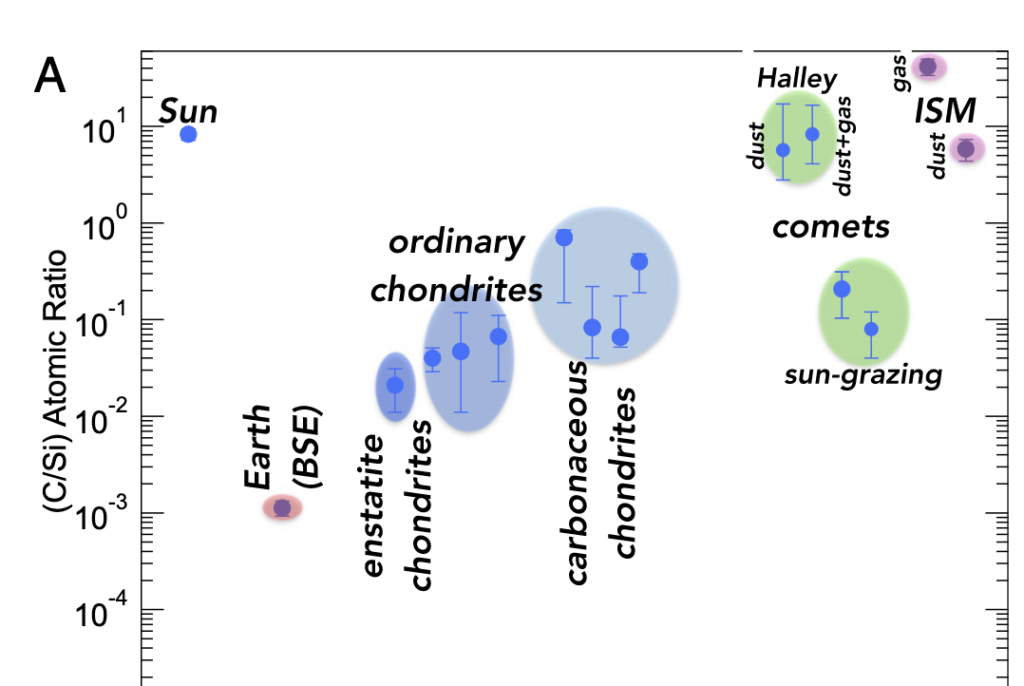
During his plenary, he also spoke about isotopic fractionation and how it offers a new window into planet formation. He showed the TW Hya system, where they looked at the ratio of 12C to 13C. This can be done for other planetary systems to say whether the system could be carbon rich (see Figure 1). He then ended his talk by talking about our own planet. Earth is relatively carbon poor compared to our Sun, Venus, and meteorites called chondrites (see Figure 2). Earth was formed of mainly refractory materials with small amounts of soot and water, and he aims to understand soot in the context of exoplanets. He also studied the geological processes that could lead to outgassing on exoplanets and how the carbon inventory can lead to methane in their atmospheres and potentially hazes as well.

He is very interested in how all of these aspects of planetary formation and evolution could impact the habitability of exoplanets, and it is certainly something to look out for in our search for life in other worlds!
Twitter thread of plenary lecture by Junellie Gonzalez Quiles.
Press Conference: Solar Swirls, Satellites, and Saving the Night Sky (by Lucas Brown)
The second press conference of the day switched gears from the distant reaches of the universe to our local corner of space, with presentations on a new solar weather phenomenon, the positives and negatives of artificial satellites for astronomy, and updates on efforts to preserve the night sky.
First up was Oana Vesa from New Mexico State University, who spoke on new research into solar tornadoes. That’s right — there are tornadoes on the Sun. Only discovered in 2008, there is little known about the formation mechanisms behind these tornadoes or their overall role in the solar environment. Vesa explained that these tornadoes, consisting of hot, swirling plasma, are bound to the surface of the Sun magnetically, and can channel mass and energy up through different levels of the solar atmosphere. And like most things on the sun, their scale is massive. These chaotic solar vortexes vary from the size of a city all the way up to the size of Earth. Through new observations performed at the Dunn Solar Telescope, Vesa’s team has tracked dozens of these events, and they have begun the process of cataloging and analyzing their behaviors. So far, the team has found the tornadoes to have an average lifespan of about 8 minutes, and some have been seen to form in pairs or exhibit chaotic spiraling patterns. There’s a lot left to learn about these fiery storms.
Next up was Justin Albert from the University of Victoria, who gave an overview of ORCASat, a recent cubesat mission that intends to demonstrate the utility of specialized satellites for calibrating ground-based telescopes. ORCASat contains a specialized cavity known as a Lambertian sphere, which evenly disperses incoming laser light before some of that light reflects down towards Earth. This system allows for on-board photodiodes to very accurately measure the intensity of light which will be beamed through the atmosphere. In turn, ground-based equipment can observe the satellite in orbit and determine how much light was lost as it passed through the atmosphere, providing a very sensitive method of calibration. The satellite has been in orbit since November of last year, and in the ensuing months, one complete exposure (in good lighting conditions) has been taken of the satellite streaking across the sky, providing a first proof-of-concept of the method. NASA and NIST are expected to develop a more advanced satellite for this purpose in the future, which will hopefully help increase the accuracy of measurements taken by ground-based telescopes.

While satellites like ORCASat may help increase the accuracy of ground-based astronomy through its intentional emission of light, most satellites in orbit are actually detrimental to ground-based astronomy due to their reflection of light, occasionally creating bright streaks in astronomical imagery. For this reason, astronomers around the world have been working on developing algorithms to automatically detect such streaks and remove them or toss out the affected imagery. David Stark from the Space Telescope Science Institute (STScI) spoke on this in his talk, highlighting the development of a new algorithm which greatly increases the accuracy of satellite-trail detection. The algorithm employs a method known as a “Median Radon Transform,” which essentially looks for the median pixel brightness in every possible straight line one could trace within an image. A large outlier in a given line’s median value is a strong sign that that line contained an abnormal amount of light, often due to a satellite trail. This method significantly improved satellite-trail detection over previous methods developed at STScI. In testing the method on Hubble Space Telescope (HST) data, Stark and his team found that the number of satellite trails in HST imagery had roughly doubled over its lifetime, but noted that the rate was still so small that it did not hinder HST’s ability to do science.
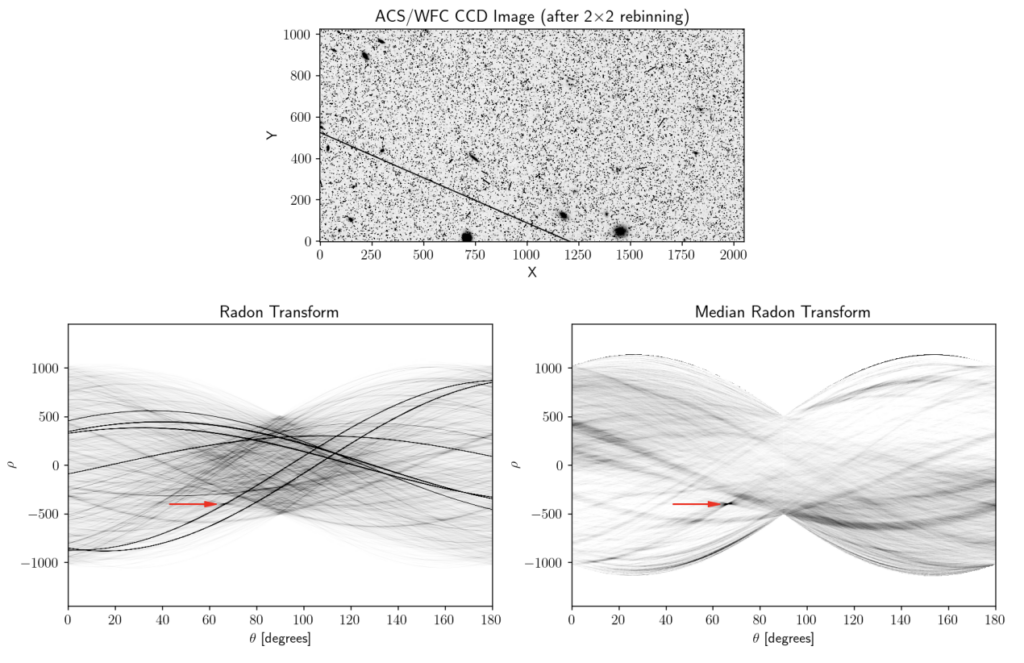
Closing out today’s second press conference, James Lowenthal from Smith College spoke about efforts to protect the night sky from light pollution. He noted that terrestrial light pollution from cities is in many ways a more significant threat to astronomy than satellite trails, and has many other negative effects such as harming plants and animals which are all used to a particular day-night cycle that has been disrupted in recent years. He also highlighted the spiritual significance of the night sky to many native communities. Lowenthal noted that dark sky advocacy groups have grown in recent years thanks in part to renewed interest due to the growth of satellite mega-constellations like SpaceX’s Starlink. Through the efforts of dark sky groups and their partnerships with native communities, local governments, and industry, some strides have been made towards preserving the night sky, such as creating new lighting standards centered around preserving the night sky while still illuminating cities. However, much more work has to be done given that recent research has shown that light pollution is increasing at much higher rates than previously thought due in part to the proliferation of LEDs. One of the success stories Lowenthal highlighted in his talk was the protections enacted in Coconino County, Arizona, home to numerous historic observatories. Another recent example given was the enacting of official dark sky protections in central Maine, one of the last remaining dark sky sites east of the Mississippi River.
Plenary Lecture: Greg Taylor (University of New Mexico) (By Ben Cassese)
Greg Taylor of the University of New Mexico delivered the third plenary of the day. Over the course of 45 minutes, Prof. Taylor took the denizens of Ballroom C and the Zoomiverse on a whirlwind tour of science conducted with the Long Wavelength Array (LWA) over the past decade. This instrument, a collection of 256 individual antennae spread throughout a 100-meter ellipse, has touched an impressive number of subfields in that time: From pulsars to the solar wind, the LWA has seen (and measured) it all.
After joking that his talk would last 6 hours and cover each of the roughly 80 papers built on LWA data, Taylor settled for summaries of some of the highlights. Many of these centered on the detection and characterization of meteors as they streak through the atmosphere and leave a wake of radio-bright ionized material trailing behind. There was a satisfying arc to this line of research: When Taylor and collaborators first saw these brief signals, they did not know what to make of them. They could think of no astronomical source for these transients scattered evenly throughout the sky, and only with careful analysis and cross-checking with other techniques did they realize that they had built a uniquely capable meteor detector. The team has since made the study of disintegrating meteors and their fireballs a major research focus.

Taylor also shared an overview of observations designed to test models of the solar wind. Here, the LWA stared at a pulsar (during the day! Radio astronomy is great like that) and measured how its signal changed as the Sun edged closer and closer to their line of sight. This let the team probe different regions of interplanetary space and constrain the ionized material that hovers within the solar system and slightly distorts radio signals.
After including very brief overviews of a few other projects, Taylor pivoted to the future of the LWA. The team has already constructed a second, similar array far from the original, which they can connect to form a longer baseline and better angular resolution. In the coming years, they hope to repeat this improvement in the extreme and build a “swarm” of small arrays dispersed across the United States. Some of these sites are purely aspirational, but some already have committed funding; in all, it looks like the next decade will be even more productive than the last.

Plenary Lecture: Jeyhan Kartaltepe (Rochester Institute of Technology)
“Far and wide eyes of the JWST” was the theme of the final plenary session at AAS 242 on Monday. Prof. Jeyhan Kartaltepe from the Rochester Institute of Technology talked about results from two wide-ranging projects from the first JWST observing cycle and how they are constantly molding our knowledge of cosmic history.
Kartaltepe began with a brief overview of JWST’s capabilities and how its infrared eyes unlock the deepest reaches of the universe by detecting light that has been redshifted to those wavelengths due to cosmic expansion. JWST was always going to be pathbreaking, and all astronomers knew it. When asked how many in the plenary woke up early (in US time zones) to watch it launch on Christmas day in 2021, 90% of the hall raised its hands.

The first project Kartaltepe’s plenary featured was CEERS, which observes a 100 square arcminute patch of the sky to demonstrate, test, and validate efficient extragalactic surveys. An early science result from CEERS was the discovery of a faraway galaxy, now known as Maisie’s galaxy after the daughter of one of the project PIs. Maisie’s galaxy looks like a red blob among a sea of usual-looking galaxies, as is typical for such early galaxies. But the interesting thing was that it wasn’t a standalone galaxy in CEERS data! There were several more candidates found in JWST images, challenging our understanding of how quickly galaxies started to form and mature in our universe.
But among the exciting early galaxy candidates also hide several mimickers: nearby, dusty galaxies also have the same red, blobby appearance which can be mistaken to be one due to high redshift by photometry (studying properties of the images) alone. But JWST does much more than just click pictures of these galaxies. It can also study their character using a spectroscope, or a prism that splits light to unveil the telltale signatures of molecules within it. The spectroscopic data from JWST of Maisie’s galaxy was so clean, that it “looked just like that of a nearby galaxy,” said Kartaltepe. This helped them confirm its age of being only around 390 million years after the Big Bang! Spectroscopy also helps confirm (or reevaluate) the age of early galaxy candidates. Kartaltepe gave an example of a galaxy first believed to have a redshift of 16 (placing it among the earliest ever detected galaxies), which was then reduced to 4.9 thanks to the JWST’s NIRSpec data.
The second project that Kartaltepe is excited about is Cosmos-Web. This project covers a relatively big patch of the sky, just larger than the full Moon, but goes deep into it with JWST’s far-reaching eye to record all galaxies near and far that lie within. This patch of the sky was chosen because part of it has been extensively studied by the Hubble space telescope, allowing for extracting science out of the two sets of observations in tandem. As of today, Cosmos-Web has completed about half of its observations and is already finding large numbers of high-redshift galaxy candidates, dusty star-forming galaxies, and more!

Kartaltepe concluded her plenary by stressing the importance of mentorship in furthering our field and supporting the progress of students and early career researchers. “I wouldn’t be here if not for excellent mentors,” she said, and urged all students today to pick an advisor who prioritizes seeing them as a person first.

